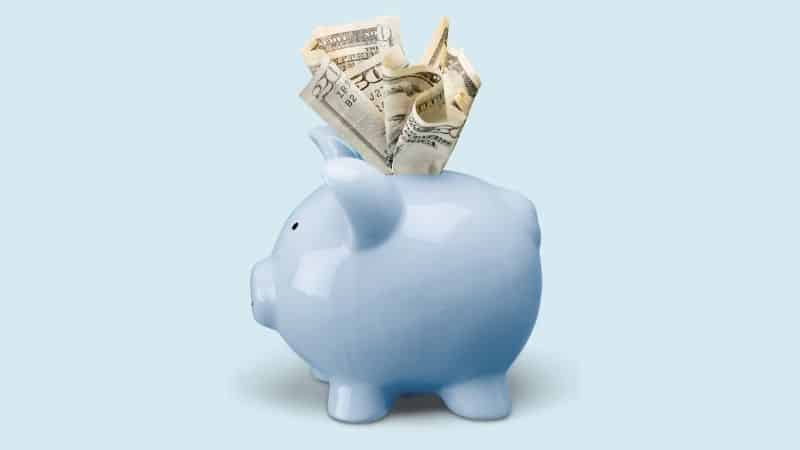
Everyone needs money. From meeting our most basic needs to allowing us the freedom to live as we wish, money is essential to our well-being. Money, essentially, makes the world go ’round. But financially fit individuals don’t just have money; they save money. And they do so in a variety of ways.
“Savings accounts give individuals a safe place to keep the money they may need to make short-term purchases and fund upcoming goals,” says Eric Roberge, a certified financial planner and the founder of Beyond Your Hammock. Of course, some savings accounts are limited in scope; they are meant to be used for college, for example, or to be applied as a down payment on a home. Some are overflow accounts, where we store excess money for a “rainy day.” Others still are meant to be used in emergencies only—to cover unexpected hits to your income and/or major home repairs.
As for that emergency fund, the common wisdom states that your emergency fund should contain enough cash to cover three to six months’ worth of your usual expenses. This way, the emergency fund keeps you afloat if you were to lose your income—for a few months, at least, as you look for another source of income. But that emergency fund should not be the end-all-be-all of your savings.
Here’s everything you need to know about saving money—and why you should have more than just an emergency fund.
What is the purpose of a savings account?
“People define savings accounts differently,” says Connor Brown, a personal finance expert and the founder of After School Finance. “Some believe that savings accounts are only for saving for things like emergency funds; however, I believe savings accounts are the place to store most of your cash, even if it’s for spending.” A savings account is a bank account that lets you store your money securely while typically earning interest.
How much money should you have in savings?
Contrary to popular belief, there is no one-size-fits-all answer to the question of how much money should you have in your savings account. It’s a very personal decision—one based on your unique circumstances and needs. “You don’t need to keep a set amount of money in your savings account unless you have a specific goal you’re saving for,” Roberge says. “Rather than focusing on the amount, focus on what you PLAN to save.” For example, decide how much you want to put away weekly, biweekly, or monthly—whatever works best for you and your budget—and stick with it. Consistency is key.
That said, while the amount in your savings account will vary, the amount in your emergency fund should not. As mentioned earlier, experts suggest having three to six months’ worth of expenses squirreled away in a safe place, space, or account. However, this differs from your general savings account. “While many individuals will regularly withdraw cash from their savings account[s], when building an emergency fund, the key is tracking the balance and keeping it off-limits,” Brown says.
How do savings accounts and emergency funds differ?
The difference between a savings account and an emergency fund lies in its purpose, or what it is used for. “Your savings account is for cash savings that you can plan for; it’s a place to transfer money as you build up enough to achieve a goal, or to keep the cash you’ve already saved for short-term purchases you identified ahead of time,” Roberge says. “An emergency fund, on the other hand, is a cash reserve that you maintain specifically for unexpected expenses that you couldn’t otherwise handle with your normal monthly cash flow (think a major medical bill, or a sudden job loss and therefore loss of income).” To put it another way, a savings account is what you planned for. An emergency fund is for life’s curveballs that you could not have possibly seen coming.
What is an emergency fund used for?
There are numerous reasons why you may want and/or need to access emergency funds, including:
- Job loss
- Pet care
- Medical expenses
- Car repairs
- Emergency dental work
- Home needs (i.e., a broken water heater, leaky roof, etc.)
However, it is important that the funds only be accessed during a true emergency. You cannot and should not touch this account to cover vacations, clothing purchases, and/or other non-essential expenses.
Not sure if your situation is an emergency? Erica Sandberg, a consumer finance expert and journalist, tells Experian the best way to know the difference is to apply and pass a two-pronged test. If a situation is a true emergency, “your life will be significantly disrupted if you don’t spend the money. Time is [also] of the essence… you can’t afford to wait and save for what you need.”
What is the best way to save money?
All of this talk is great, but it doesn’t get you anywhere if you are unable to save money. Knowing what to do and when doesn’t matter if you aren’t in a position to apply that know-how. So what’s the best way to get started? According to Brown, first off, track your spending.
“I know it’s a cliche, but when you track your spending, you get a much better sense of what you can afford to save,” says Brown. Keeping an eye on expenses shows you where you can pull back or cut down. Moving money out of your checking to savings on the regular is also imperative—no amount is too small to get started.
























